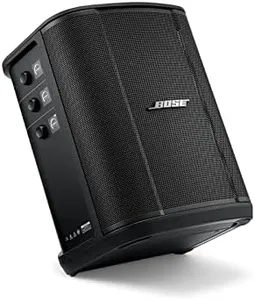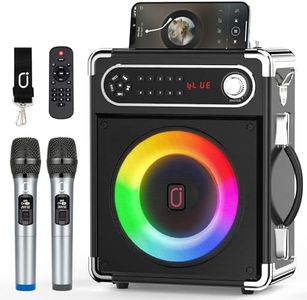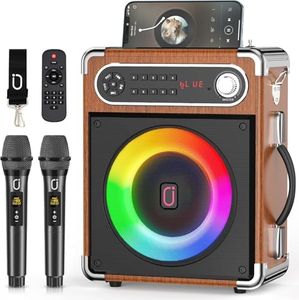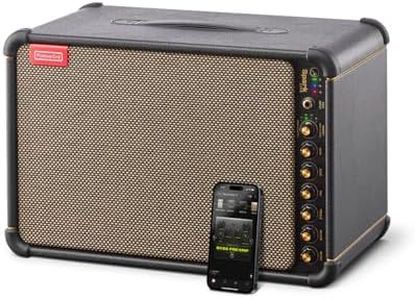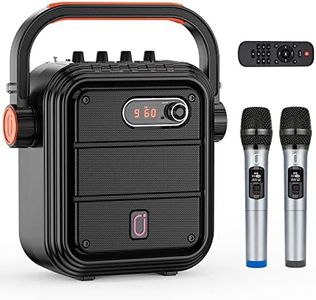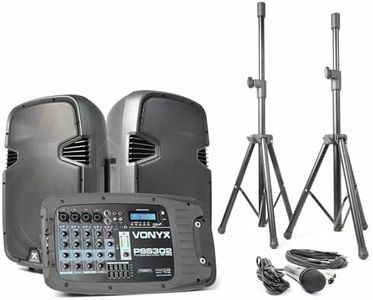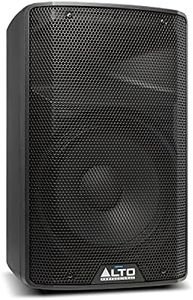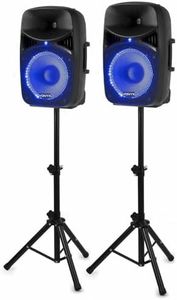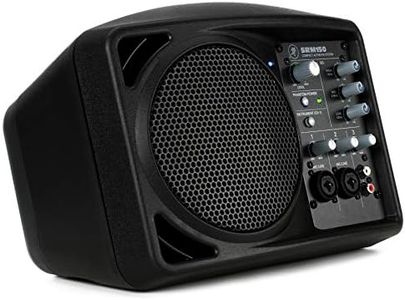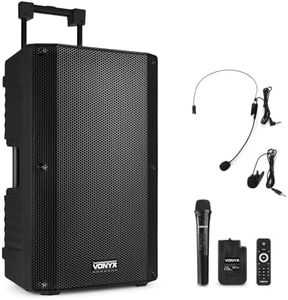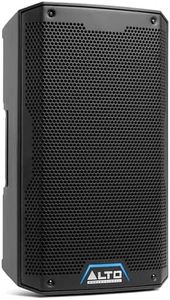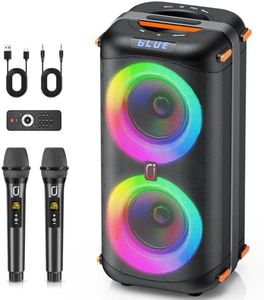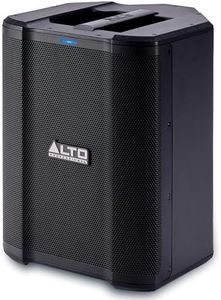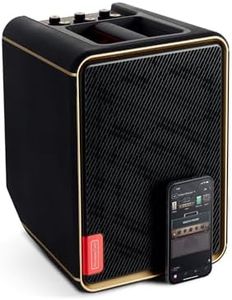We Use CookiesWe use cookies to enhance the security, performance,
functionality and for analytical and promotional activities. By continuing to browse this site you
are agreeing to our privacy policy
10 Best Portable PA Systems
From leading brands and best sellers available on the web.Buying Guide for the Best Portable PA Systems
Choosing a portable PA (public address) system can really enhance your ability to be heard clearly in various settings, from outdoor events to classroom presentations or fitness classes. The key is to match the system's strengths to your particular usage – think about how many people you want to reach, where you'll use the system, and what you might be plugging in, such as microphones or instruments. Understanding the main features of portable PA systems helps you avoid overpaying for what you don't need or ending up with a system that’s too weak for your purpose.Power Output (Watts)Power output, measured in watts, refers to how loud the PA system can get and how well it fills an area with sound. More watts means louder sound, which is important for larger spaces or outdoor use where sound can dissipate quickly. For small gatherings (under 50 people), a unit around 20-50 watts is usually sufficient. Medium occasions, like classrooms or meetings of 50-200 people, might need 50-100 watts. For larger crowds or outdoor events, you’ll want 100 watts or more. To pick the right one, estimate your crowd size, consider whether you'll be indoors or outdoors, and remember: having a bit more power than you think you need is better than running short.
Portability (Weight & Size)Portability tells you how easy it is to transport or move your PA system. Lightweight, compact systems are easier to carry or toss in a car but may sacrifice some sound power or features. Heavier and larger models often have wheels or handles but can be more of a hassle to move frequently. If you need a PA system just for a fixed location, portability may not matter much. If you will be transporting it between venues or carrying it by hand, prioritize lighter and more compact systems. Think about the space it will occupy when not in use too.
Battery LifeBattery life tells you how long the PA system can run without being plugged in. This matters if you’ll use the system outdoors or anywhere electricity isn't always available. PA systems usually list battery life in hours, ranging from around 3 to over 12 hours. Long battery life is crucial for day-long events or outdoor activities, while shorter battery life may suffice for brief meetings or sessions. Choose a system with a battery that matches or exceeds your longest typical session, and consider if the battery is rechargeable or can be swapped out for backups.
Inputs and ConnectivityInputs and connectivity refer to what you can plug into the PA: microphones, music players, instruments, or wireless devices. Common options include standard microphone (XLR), line input (for instruments or mixers), Bluetooth (for wireless streaming), and USB/SD slots (for pre-recorded tracks). Knowing what you need is key: if you just need a mic, one or two inputs are fine. For music backing tracks or band use, you’ll need more types or numbers of inputs. Look for Bluetooth if you want wireless streaming from a phone or tablet. The right system should match the devices and accessories you plan to use most.
Microphone OptionsMicrophone options highlight whether the system comes with microphones, and whether they're wired or wireless. Wired microphones offer reliability, but wireless mics add freedom of movement. Some systems even allow you to use more than one mic at a time for group presentations. If you need to move around a lot, a wireless mic is a huge advantage, but for simple speeches standing in place, a wired mic may be fine. Make sure the system supports the number and type of microphones you require.
Durability and Weather ResistanceDurability and weather resistance describe how well the PA system holds up to bumps, drops, and different weather conditions. Basic models are fine for indoor or gentle use, while more rugged units are built with tough shells and may be splash-resistant for outdoor or adventurous activities. If you expect to use the system outside or in demanding environments (like sporting events or street performances), look for one with strong build quality and some weatherproofing. For indoor-only use, this may be less critical.
Built-in Features (Mixers, Effects, Accessories)Some PA systems offer extra features like built-in mixers (to easily control multiple audio sources), basic effects like echo or reverb, or accessories (stands, remotes, carrying cases). If you want to adjust sound levels for multiple microphones or instruments directly from the unit, a built-in mixer helps. Effects are handy for singers or spoken word to add richness to the audio. Accessories add convenience, especially if you’re traveling. Think about what’s truly useful for your events – more features sometimes mean more complexity, so aim for what you’ll actually use.
